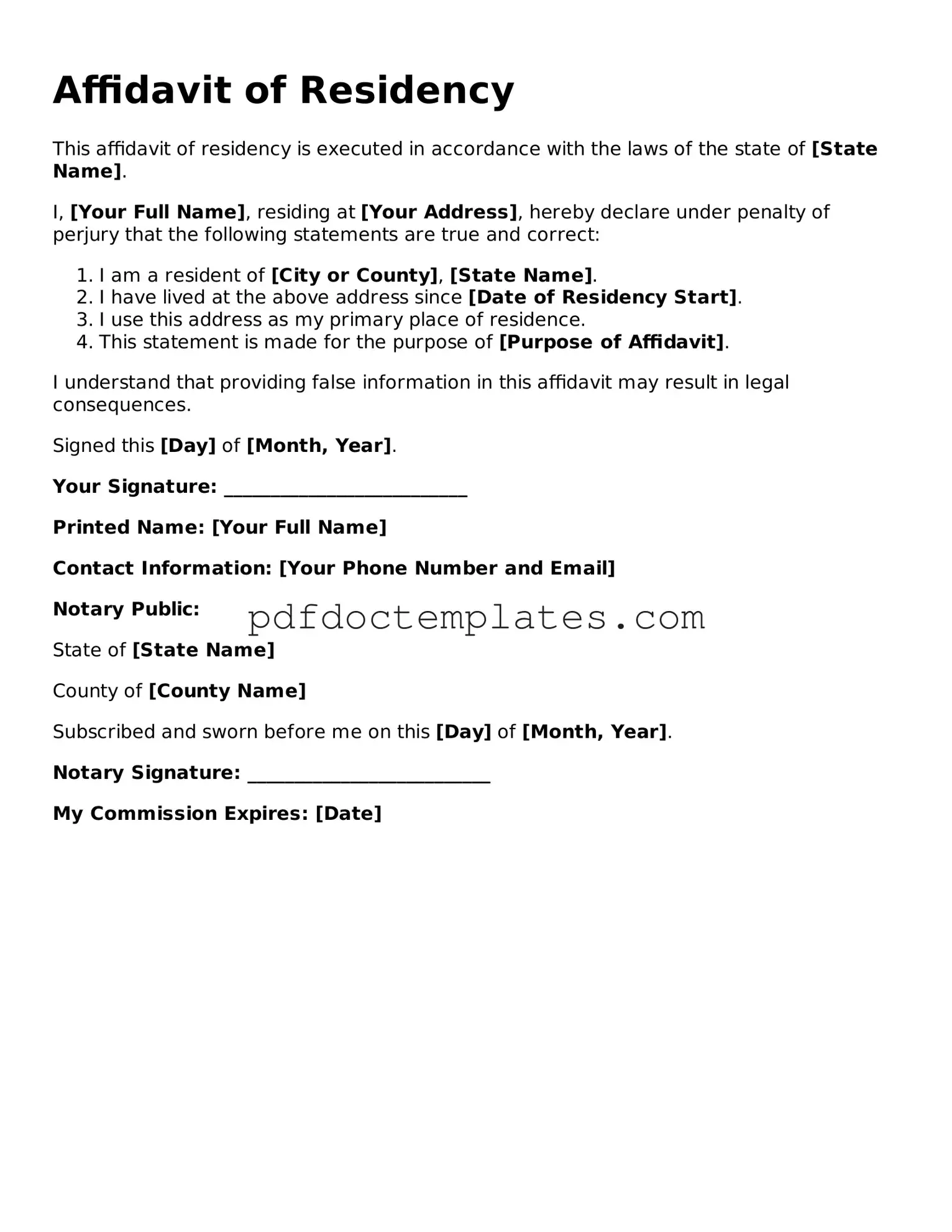Printable Affidavit of Residency Template
The Affidavit of Residency form is a legal document used to verify an individual's residence at a specific address. This form is often required for various purposes, such as enrolling children in school or applying for government assistance. Understanding how to properly complete this form is essential for ensuring compliance with local regulations.
To get started on filling out the Affidavit of Residency form, click the button below.
Access Your Document
